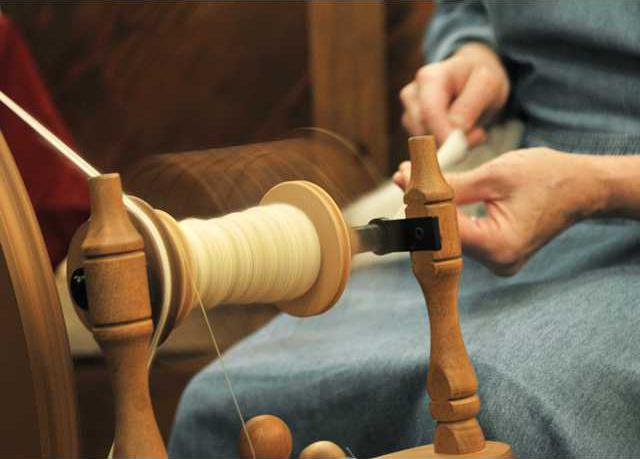DAHLONEGA
Summer Jefferson struck gold Saturday with the help of a gray-bearded stranger with a metal pan.
"This is so cool, I got a piece of gold that’s worth 35 cents," the 10-year-old Forsyth County girl said, holding up a small glass tube of water with a flake of gold floating inside it.
Earlier, Summer asked living history re-enactor Mike Clark about how to tell the difference between fool’s gold and real gold.
"Real gold has that luster; fool’s gold is brittle," Clark, playing the role of the gold-panning miner, explained. "I think you’ve got the gold fever, young lady."
Summer and her 5-year-old brother, Reid, were among the visitors Saturday to the Dahlonega Gold Museum’s second annual "A Day in a Miner’s Life," a living history event where re-enactors portrayed the lives of not only the miner, but the blacksmith, woodcarver, spinner, basket maker and gold assayer.
"We wanted to develop a legacy event that focuses on the heritage here in Dahlonega," said Robin Glass, the site’s interpretive ranger, who wore the dark-suited, stove-top hat attire of an assayer. "This shows the people who were in direct involvement with the miners and the citizens here during the gold rush."
The time being portrayed was the 1830s, when Dahlonega was the site of the nation’s first gold rush. Children were encouraged to saw logs with a double-handled saw and make their own wooden shingles, then barter them for a bit of gold panned from a bucket.
"This is a good day to pass on heritage of the community and local history," Clark, the gold miner, said. "I think every kid is always wanting to look for treasure. This shows them how hard it was back then."
"They just absorb it and remember it so much more when it’s hands-on," said Steve Hadley, who demonstrated pioneer tools and shingle-making. Explaining his involvement, Hadley said, "This type of thing, these traditions and activities, just have to be carried on."
While each child got a little flake of gold worth between 25 and 35 cents, inside the museum, they could hold a small glass jar containing two pounds of gold flakes valued at $22,000.
Also on display was a recent addition to the museum — a framed U.S. mint appointment for Dahlonega assayer Isaac Todd signed by U.S. President John Tyler. The document, and Todd’s circa 1790s, 18k gold pocket watch, were donated to the museum by Todd’s family and went on display about six months ago.
The signature of Tyler is a rare acquisition, Glass said, and "it’s a very interesting document that ties directly to the history here."
Outside, blacksmith David Clark clanged away over coals that reached temperatures of 3,000 degrees.
Summer Jefferson’s impression of the toil and sweat on display Saturday was one of appreciation.
"I’m glad we’ve got electricity and other people to do this," she said.




